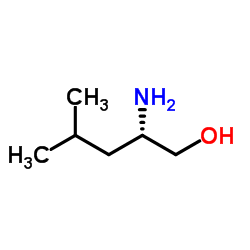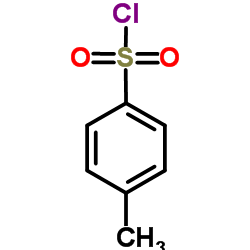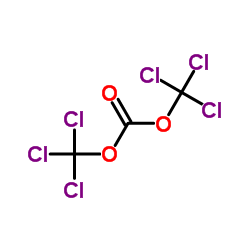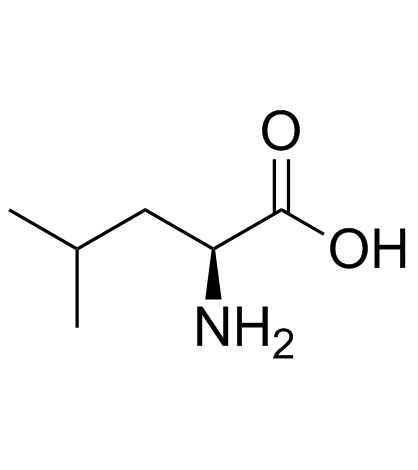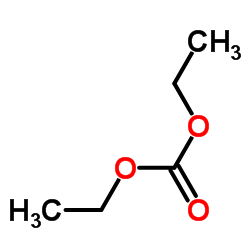(S)-4-ISOBUTYLOXAZOLIDIN-2-ONE
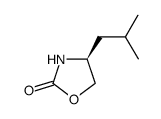
(S)-4-ISOBUTYLOXAZOLIDIN-2-ONE structure
|
Common Name | (S)-4-ISOBUTYLOXAZOLIDIN-2-ONE | ||
|---|---|---|---|---|
| CAS Number | 17016-85-2 | Molecular Weight | 143.18400 | |
| Density | N/A | Boiling Point | N/A | |
| Molecular Formula | C7H13NO2 | Melting Point | N/A | |
| MSDS | N/A | Flash Point | N/A | |
| Name | (4S)-4-(2-methylpropyl)-1,3-oxazolidin-2-one |
|---|---|
| Synonym | More Synonyms |
| Molecular Formula | C7H13NO2 |
|---|---|
| Molecular Weight | 143.18400 |
| Exact Mass | 143.09500 |
| PSA | 38.33000 |
| LogP | 1.46970 |
| InChIKey | QQOAHLJDKWZJPD-LURJTMIESA-N |
| SMILES | CC(C)CC1COC(=O)N1 |
Synonym: Section 2 - COMPOSITION, INFORMATION ON INGREDIENTS
Risk Phrases: None Listed. Section 3 - HAZARDS IDENTIFICATION EMERGENCY OVERVIEW
Not available. Potential Health Effects Eye: May cause eye irritation. Skin: May cause skin irritation. May be harmful if absorbed through the skin. Ingestion: May cause irritation of the digestive tract. May be harmful if swallowed. Inhalation: May cause respiratory tract irritation. May be harmful if inhaled. Chronic: Not available. Section 4 - FIRST AID MEASURES Eyes: Flush eyes with plenty of water for at least 15 minutes, occasionally lifting the upper and lower eyelids. Get medical aid. Skin: Get medical aid. Flush skin with plenty of water for at least 15 minutes while removing contaminated clothing and shoes. Ingestion: Get medical aid. Wash mouth out with water. Inhalation: Remove from exposure and move to fresh air immediately. Notes to Physician: Treat symptomatically and supportively. Section 5 - FIRE FIGHTING MEASURES General Information: As in any fire, wear a self-contained breathing apparatus in pressure-demand, MSHA/NIOSH (approved or equivalent), and full protective gear. Extinguishing Media: Use water spray, dry chemical, carbon dioxide, or chemical foam. Section 6 - ACCIDENTAL RELEASE MEASURES General Information: Use proper personal protective equipment as indicated in Section 8. Spills/Leaks: Vacuum or sweep up material and place into a suitable disposal container. Section 7 - HANDLING and STORAGE Handling: Avoid breathing dust, vapor, mist, or gas. Avoid contact with skin and eyes. Storage: Store in a cool, dry place. Store in a tightly closed container. Section 8 - EXPOSURE CONTROLS, PERSONAL PROTECTION Engineering Controls: Use adequate ventilation to keep airborne concentrations low. Exposure Limits CAS# 17016-85-2: Personal Protective Equipment Eyes: Not available. Skin: Wear appropriate protective gloves to prevent skin exposure. Clothing: Wear appropriate protective clothing to prevent skin exposure. Respirators: Follow the OSHA respirator regulations found in 29 CFR 1910.134 or European Standard EN 149. Use a NIOSH/MSHA or European Standard EN 149 approved respirator if exposure limits are exceeded or if irritation or other symptoms are experienced. Section 9 - PHYSICAL AND CHEMICAL PROPERTIES Physical State: Powder Color: white to light yellow Odor: Not available. pH: Not available. Vapor Pressure: Not available. Viscosity: Not available. Boiling Point: Not available. Freezing/Melting Point: Not available. Autoignition Temperature: Not available. Flash Point: Not available. Explosion Limits, lower: Not available. Explosion Limits, upper: Not available. Decomposition Temperature: Solubility in water: Specific Gravity/Density: Molecular Formula: C7H13NO2 Molecular Weight: 143.19 Section 10 - STABILITY AND REACTIVITY Chemical Stability: Not available. Conditions to Avoid: Incompatible materials. Incompatibilities with Other Materials: Strong oxidizing agents. Hazardous Decomposition Products: Nitrogen oxides, carbon monoxide, carbon dioxide. Hazardous Polymerization: Has not been reported. Section 11 - TOXICOLOGICAL INFORMATION RTECS#: CAS# 17016-85-2 unlisted. LD50/LC50: Not available. Carcinogenicity: (4S)-4-Isobutyl-2-oxazolidinone - Not listed by ACGIH, IARC, or NTP. Section 12 - ECOLOGICAL INFORMATION Section 13 - DISPOSAL CONSIDERATIONS Dispose of in a manner consistent with federal, state, and local regulations. Section 14 - TRANSPORT INFORMATION IATA Not regulated as a hazardous material. IMO Not regulated as a hazardous material. RID/ADR Not regulated as a hazardous material. Section 15 - REGULATORY INFORMATION European/International Regulations European Labeling in Accordance with EC Directives Hazard Symbols: Not available. Risk Phrases: Safety Phrases: S 24/25 Avoid contact with skin and eyes. WGK (Water Danger/Protection) CAS# 17016-85-2: No information available. Canada None of the chemicals in this product are listed on the DSL/NDSL list. CAS# 17016-85-2 is not listed on Canada's Ingredient Disclosure List. US FEDERAL TSCA CAS# 17016-85-2 is not listed on the TSCA inventory. It is for research and development use only. SECTION 16 - ADDITIONAL INFORMATION N/A |
| HS Code | 2934999090 |
|---|
|
~48% 
(S)-4-ISOBUTYLO... CAS#:17016-85-2 |
| Literature: Foo, Siong Wan; Takada, Yuki; Yamazaki, Yusuke; Saito, Susumu Tetrahedron Letters, 2013 , vol. 54, # 35 p. 4717 - 4720 |
|
~70% 
(S)-4-ISOBUTYLO... CAS#:17016-85-2
Detail
|
| Literature: Feroci, Marta; Gennaro, Armando; Inesi, Achille; Orsini, Monica; Palombi, Laura Tetrahedron Letters, 2002 , vol. 43, # 33 p. 5863 - 5865 |
|
~% 
(S)-4-ISOBUTYLO... CAS#:17016-85-2 |
| Literature: Begis, Guillaume; Cladingboel, David E.; Jerome, Laure; Motherwell, William B.; Sheppard, Tom D. European Journal of Organic Chemistry, 2009 , # 10 p. 1532 - 1548 |
|
~% 
(S)-4-ISOBUTYLO... CAS#:17016-85-2 |
| Literature: Yamamoto, Yoshinori; Onuki, Setsuko; Yumoto, Masatoshi; Asao, Naoki Heterocycles, 1998 , vol. 47, # 2 p. 765 - 780 |
|
~% 
(S)-4-ISOBUTYLO... CAS#:17016-85-2 |
| Literature: Yamamoto, Yoshinori; Onuki, Setsuko; Yumoto, Masatoshi; Asao, Naoki Heterocycles, 1998 , vol. 47, # 2 p. 765 - 780 |
| HS Code | 2934999090 |
|---|---|
| Summary | 2934999090. other heterocyclic compounds. VAT:17.0%. Tax rebate rate:13.0%. . MFN tariff:6.5%. General tariff:20.0% |
| MFCD06656594 |
